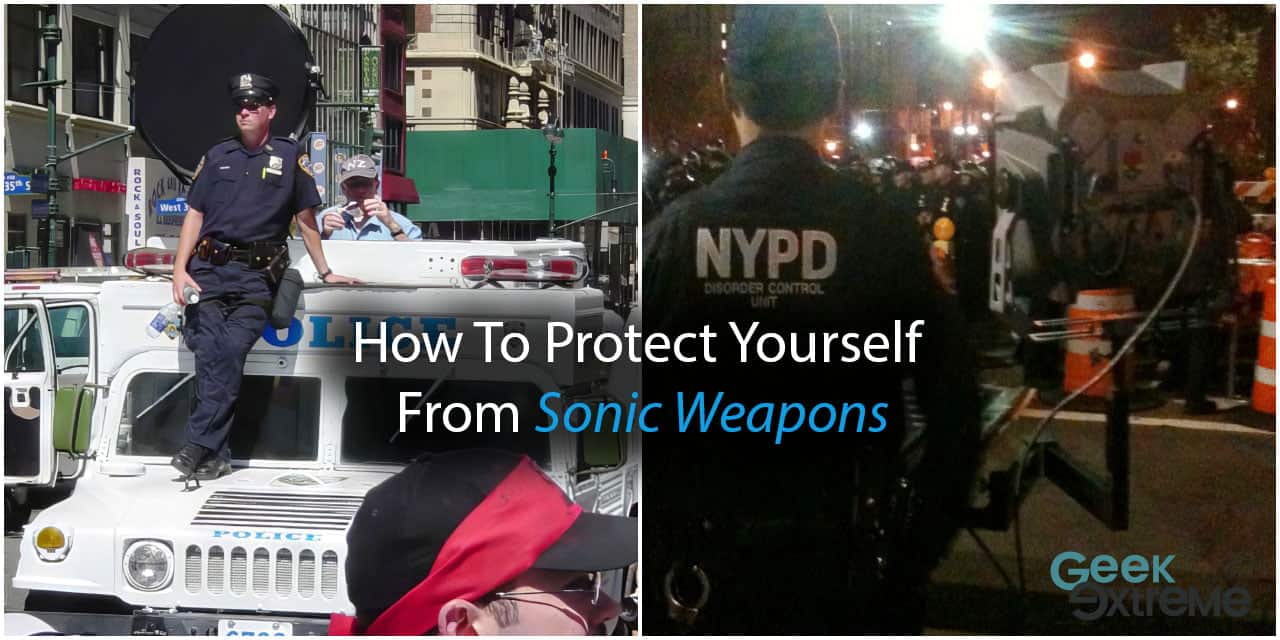The deafening sounds from sonic weapons can be an overwhelming experience, indeed. They’re not just disorienting and painful, but long-term exposure could trigger permanent hearing loss as well – a pretty unsettling thought.
After dedicating much time to research this important topic, I’ve gathered a range of practical tips that could help safeguard your auditory health against these audial assaults, such as those from sound cannons or LRADs.
It never hurts to be prepared – so let’s delve in together and learn how you might protect yourself amid the tumultuous noise!
Key Takeaways
Sonic weapons, such as LRADs, can cause a range of health problems, including disorientation, ear pain, headaches, vomiting, and even permanent hearing loss.
To protect yourself from sonic weapons, consider using noise-canceling headphones or high NRR earplugs to safeguard your ears.
When facing a potential sonic weapon attack, try to avoid the line of fire by moving to the side or seeking shelter in a soundproof area.
Stay informed about local events and potential civil unrest where these weapons might be used in order to make informed decisions about your safety.
Table of Contents
Understanding Sonic Weapons

LRAD, or Long Range Acoustic Devices, are considered sonic weapons due to their ability to emit high-pitched tones that can cause disorientation, ear pain, headaches, and even vomiting.
What is LRAD?
LRAD is short for Long Range Acoustic Device. It’s a kind of sonic weapon used around the world, especially in places like Hong Kong, Australia, New Zealand, and the USA. This tool sends out loud sounds that can hurt people’s ears or make them feel sick.
Some groups warn about how often these devices get used because they think it might be unsafe.
Why are LRADs dangerous?
LRADs, or Long Range Acoustic Devices, are a type of sonic weapon. They use high-pitched tones to cause harm. These sounds can be as loud as 160 decibels (dB). That is way above the safe sound limit of 85 dB.
Sounds over this limit can hurt your ears and lead to hearing loss right away. LRADs do not just hurt your ears; they can also make you feel disoriented or give you a headache. In some cases, the noise even makes people throw up! On top of that, police often use these devices against crowds at protests, which stirs worries about our cops becoming too much like soldiers.
It’s clear – LRADs pose real dangers to our bodies and minds.
The Impact of Sonic Weapons

Sonic weapons can have severe health effects, ranging from ear pain and headaches to vomiting and disorientation. Several case studies have showcased the damaging impact of these weapons on individuals, highlighting the urgency for protection strategies.
Health effects
Sonic weapons can hurt your body. They don’t just make a loud noise. They can cause real harm to your ears. If you listen to them for too long, you might lose your hearing in the end.
These weapons could also cause other problems. You might feel sick or dizzy after hearing the high-pitched sounds from these weapons. Some people also hear ringing in their ears, even when it’s quiet.
This is called tinnitus, and it’s not fun at all!
Case studies
Sonic weapons are a real threat to our health. They make people feel sick and confused. Here are some case studies that show their impact:
- Portland saw heavy use of sonic weapons against Black Lives Matter protestors. The crowd felt disoriented by the high-pitched sounds.
- The NYPD used sound cannons on crowds in 2014 during protests over the death of Eric Garner. People were left with ear pain and headaches.
- Activists at the NODAPL protests in 2016 reported feeling nauseous from the powerful sound waves.
- In Chicago, people marching for George Floyd’s justice felt sharp ear pain after facing sonic weapons.
- During a public protest in San Jose, police blasted high-frequency sounds, causing hearing loss among protesters.
How to Protect Yourself from Sonic Weapons
To protect yourself from sonic weapons, start by safeguarding your ears with noise-canceling headphones or high Noise Reduction Rating (NRR) earplugs. Additionally, avoiding the line of fire and being aware of the direction in which these weapons are aimed can prevent their harmful effects.
Protecting your ears
To protect your ears from sonic weapons, here are some steps you can take:
- Use foam earplugs: These can help reduce the impact of loud sounds on your ears.
- Cover your hands with your ears: By placing your hands over your ears, you can create a barrier and minimize the effect of sonic waves.
- Move to the side: If possible, try to position yourself away from the direct line of fire where the sonic weapon is being used.
- Seek shelter in a soundproof area: Find a location where there are walls or barriers that can absorb or block out the sound waves.
- Wear earmuffs or noise-canceling headphones: These devices provide an extra layer of protection for your ears and can help muffle loud noises.
Avoiding the line of fire
To protect yourself from sonic weapons, it’s important to avoid being in the line of fire. This means staying away from areas where these weapons might be used, such as protests or other potentially volatile situations.
Stay informed about local events and potential civil unrest so you can make informed decisions about where to go and what actions to take. By avoiding these risky areas, you can reduce your chances of being exposed to sonic weapons and their harmful effects.
Frequently Asked Questions About Sonic Weapons
What are sonic weapons, and how do they work?
Sonic weapons like Low-frequency Weapons and Long Range Acoustic Devices (LRADs) use sound energy to cause dizziness, nausea, or even ear damage. They send a directional focus of sound waves.
How can I protect myself from these sonic weapons?
To stay safe from sonic weaponry, you could use noise-canceling technology such as headphones. Also, you can speak to an audiologist about other options for EMF protection.
Are sonic weapons used by the police?
Yes, police departments have used directed energy weapons for crowd control in some cities like New York, Fort Lauderdale, and Colorado Springs.
Can LRADs be harmful to human hearing?
Yes! LRADs produce high-frequency sounds that could harm your auditory system, which includes eardrums and hair cells within your ears, leading to acute sound trauma or inducing vomiting.
Does Sonic warfare affect large groups of people at once?
With their geographical precision, the person using these audio devices only needs to point it toward a crowd for a deterrent tone effect – much like how one would aim with viewfinder crosshairs on video camera equipment!
Who might help me learn more about protecting myself from this kind of weapon?
Audio engineers who know about sound-blasting weapon systems or those studying environmental science may understand how these military tactics function best! You also find documentation online regarding safety measures against electromagnetic field risks caused by low-frequency weapons.
Conclusion
In conclusion, protecting yourself from sonic weapons is crucial for your safety. Wearing earplugs or earmuffs with high Noise Reduction Ratings (NRR) can help reduce the sound reaching your ears.
Keeping a safe distance and staying informed about potential situations where sonic weapons might be used can also provide some level of protection. Remember to seek immediate medical attention if exposed to a sonic weapon and experience symptoms like tinnitus, hearing loss, dizziness, nausea, or headaches.


If you hear a word cover your ears and eyes.
So the actual take away from the video was that the suggestions of this article are pretty bad and the actual option is to use ROSS foam to reflect up to 50% back at the attacker and is the most effective if forced into the situation, audio canceling does nothing against the real attack.